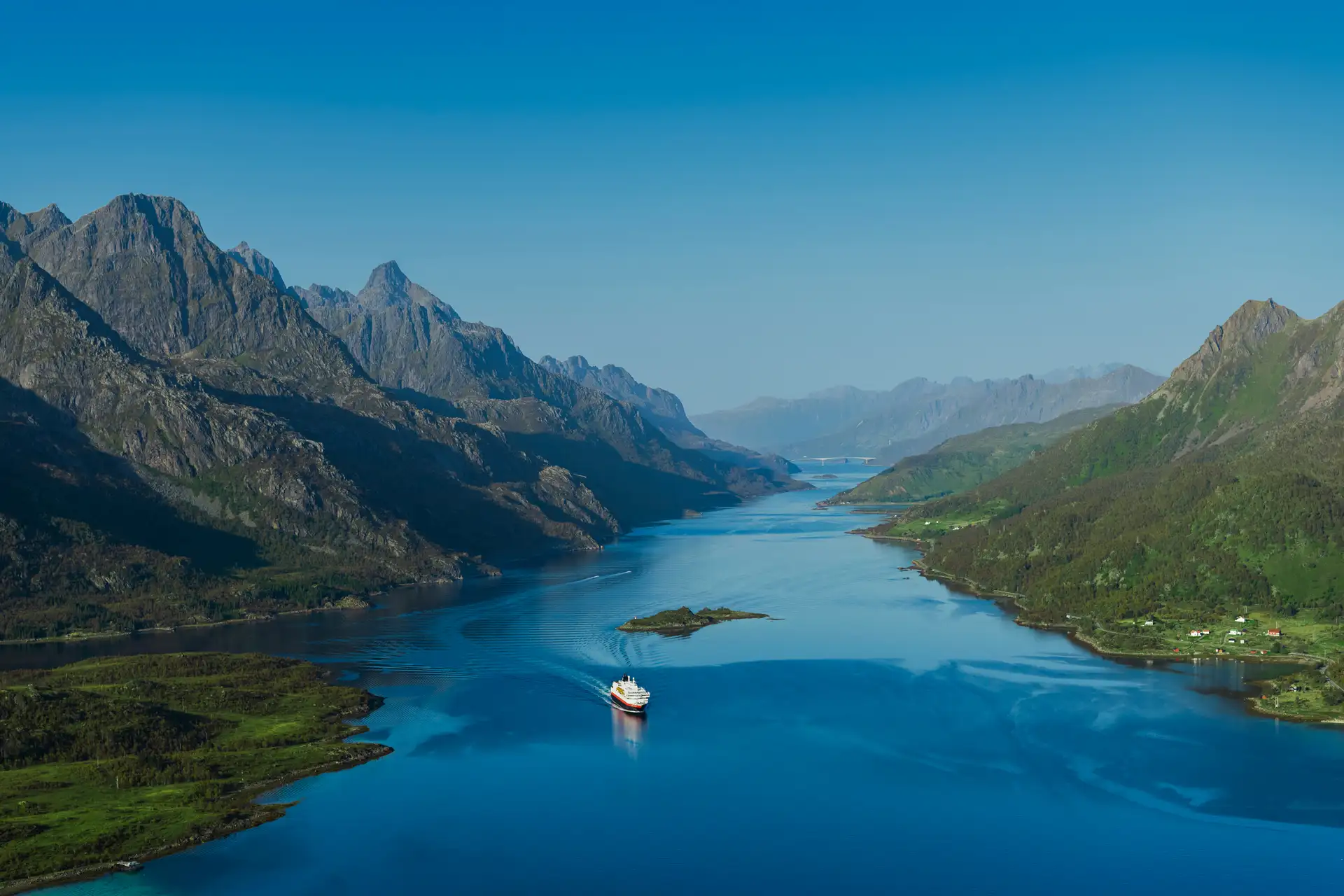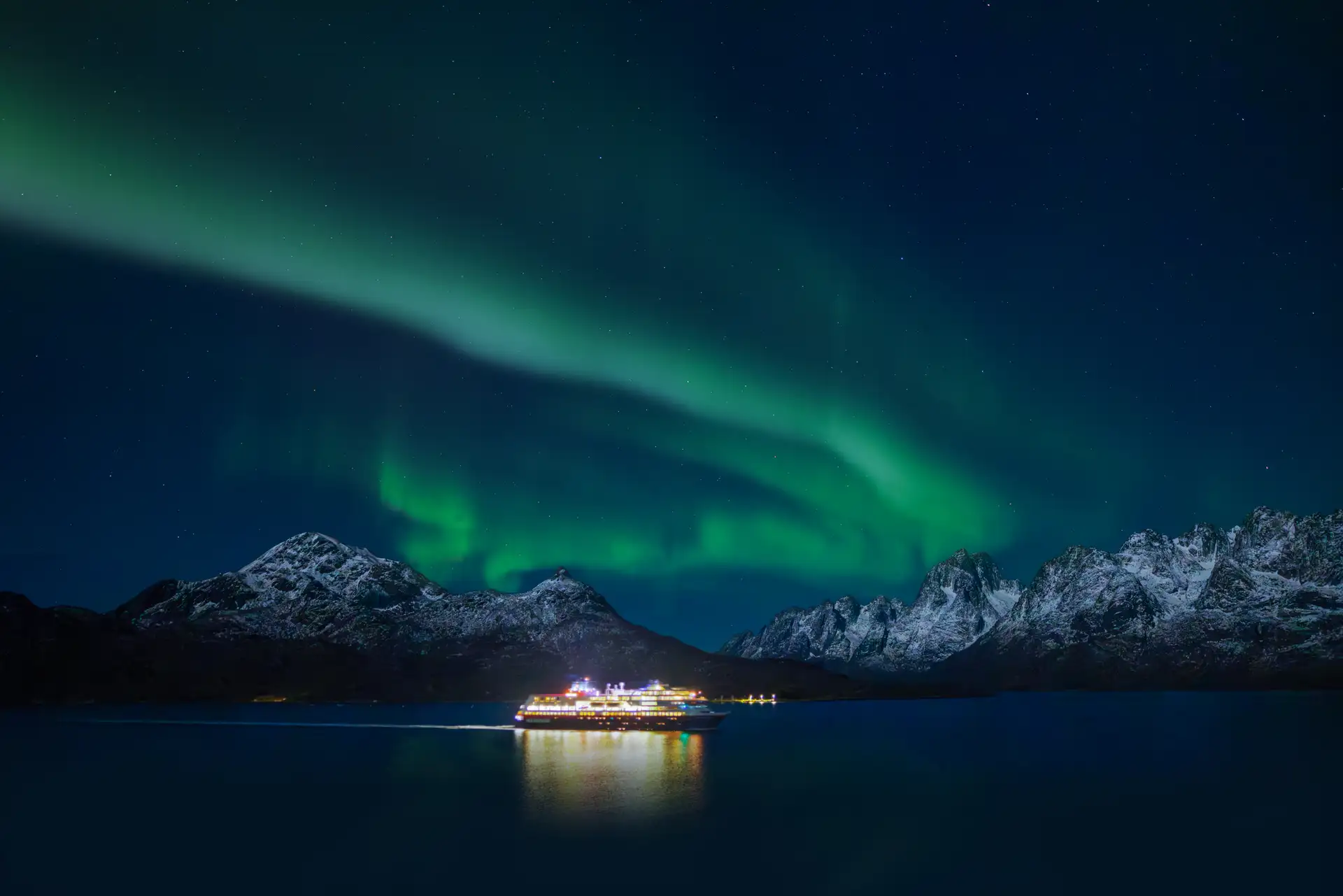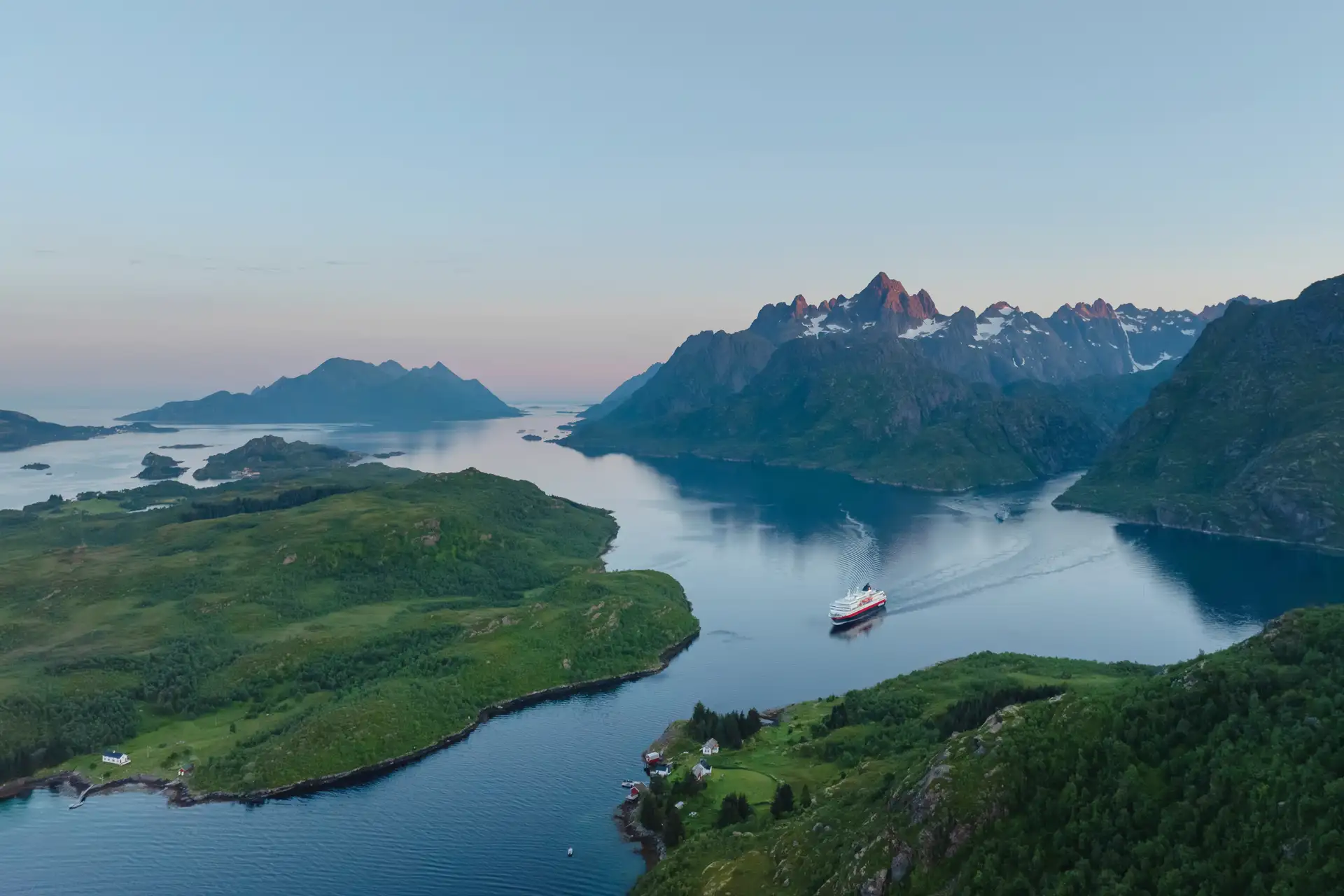Whale watching in Norway
Whales have long caught the imagination of Norwegian seafarers. Get ready to set sail for an unforgettable whale-watching experience with these mysterious, majestic mammals

Here in Norway, we’ve shared our seas with whales since time immemorial. Or perhaps that should be they’ve shared their seas with us.
A range of whale species swim in these waters all year round, making Norway a top destination for whale-watching experiences. The types of whales you can see in Norway include sperm whales and orcas, as well as the iconic humpbacks.
There aren’t many things in life that are certain. But seeing a whale on a Norwegian whale-watching tour is all but guaranteed, with many tour operators offering a second trip if you don’t.
And if you do get unlucky? You’ll still have enjoyed a voyage through fjords and past mountains, discovering the awe-inspiring wilderness of northern Norway. Things could be worse.
As we sail along the Norwegian coast, we often see whales from on board. When this happens, our crew are sure to let you know. The most common sightings are humpback whales, minke whales, and fin whales, with the gigantic blue whale occasionally seen near Svalbard. And while you’re on deck or gazing through your ship’s floor-to-ceiling windows, keep a look out for other wildlife such as porpoises and puffins – especially if travelling in spring.
What whales might I see in Norway?

Humpback whales
A musical whale with a fondness for making a splash – literally. They often slap their flippers and tail (called fluke) on the surface of the sea. They have grey backs and white bellies, and measure around 15 metres long.

Sperm whales
The loudest animal in the world, sperm whales can make a sound up to 230 decibels (that’s noisier than a rocket launch). They reach up to 17 metres long, with their distinctly large, round heads making up about a third of that body length.

Orcas
Although they’re also known as killer whales, orcas are actually dolphins. These top predators can reach up to 10 metres long and are exceptionally intelligent, with each pod believed to have its own ‘accent’.

Minke whales
One of the smaller whales, growing up to 9 metres. But what they lack in size they make up for in speed. They’re also famously friendly and inquisitive, often approaching boats. Try to spot them by the white bands on their flippers.

Fin whales
Measuring up to 25 metres long, they’re the second-largest whale in the world, just behind the blue whale. They can communicate at frequencies inaudible to the human ear, with mating sounds that can travel over 30 kilometres.

Pilot whales
Like the orca, the pilot whale isn’t a whale at all – it’s a dolphin. A social creature that can live in pods with up to 100 others, pilot whales reach up to 6 metres in length and are known for their round, bulbous heads, and long flippers.
Where is the best place to go whale watching in Norway?
Vesterålen
For the best chance of seeing whales on a whale safari, head to Vesterålen in northern Norway. An archipelago of 1,330 islands, Vesterålen is only 10 kilometres from the continental shelf, where the water becomes exceptionally deep and the whales can dive and play. In fact, this is one place in Norway where you’re virtually guaranteed to see whales all year round.
If you head to the northern tip of Vesterålen, you can go whale watching in Andenes – a small village on the island of Andøya that’s close to an underwater canyon called Bleiksdjupet. This is a hotspot for sperm whales, where they visit in numbers to feast on giant squid in the nutrient-rich waters.


Tromsø
Tromsø is an ideal base for enjoying a whale safari by day, and city life by night. Set some 350 kilometres of the Arctic Circle, you’ll find plenty of tours to choose from.
Or better yet, why not book your place on our magical excursion? This full-day whale-watching experience offers a unique view of majestic humpbacks and orcas as you cruise peacefully through the icy fjords.
When is the best time to go whale watching in Norway?
Whales are migratory mammals, so what you see will depend on the time of year. The winter whale-watching season runs from January to April, with the summer season from May to November. However, this said, some destinations – notably Vesterålen – almost guarantee sightings 12 months a year.
When winter arrives in Norway, so do the humpback whales, fin whales, and orcas. They’re following schools of herring – a little fish that provides a big meal. Of course, winter is also the best time to see the Northern Lights, meaning you could tick off two bucket-list experiences on your voyage along Norway’s coast.

In the summer, you’re likely to see minke whales, pilot whales, porpoises, dolphins, and orcas. With the Midnight Sun bringing 24 hours of non-stop daylight, you’ll also enjoy more time soaking up the Arctic landscape and feeling the suspense – and reward – of trying to see whales in their natural habitat.
Is whale watching environmentally friendly?
Think of whale-watching tours as being a guest in someone’s home. Like any good guest, you’ll want to avoid disturbing or upsetting your host. Try to keep noise to a minimum and respect your host’s personal space.
Ideally, choose a tour on a hybrid-electric catamaran, like the one we use for our excursion. The vessel switches into silent mode when it approaches any pods. For the whales, this means the boat minimises disruption and doesn't affect their listening or communication. And for you, it creates a sense of complete immersion in nature.
It’s worth noting that many whale species are endangered. However, whale-watching trips provide a strong incentive to protect and care for the pods as much as possible. And Vesterålen has been certified a ‘Sustainable Destination’, reflecting its efforts to reduce the negative effects of tourism.
Whale-watching trips with Hurtigruten
Get a unique view of humpback whales and orcas as you cruise peacefully through the icy fjords. You’ll set off from Tromsø aboard a hybrid-electric boat. When you spot a whale, the captain will switch to a silent electric engine, keeping disturbance to a minimum.



